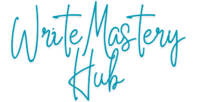Let’s be honest: and honestly, we all encounter them daily, whether we are reading a news site, going through a blog, or scrolling through our social media feed. However, one often does not think about what is involved in the process of article writing.
Sometimes it may seem as basic as typing some words, including several facts and sending the article to the audience, isn’t it? Well, not quite. Article writing remains a challenging task which requires so much more than sitting and typing strings of words. I believe it’s about sharing a story, passing on information and making your readers feel something.
But here’s the thing: effective Article writing goes beyond the use of many, many words to occupy the page. It all goes back to counting and making those words count. No matter if it is informative, persuasive or entertaining, the purpose is to make the reader read till the end of the article.
Now let us try to explore it a bit further. It is important to be wondering why exactly article writing is so important for students and other people. It is perhaps this very attribute that makes it a skill to perfect in the shortest amount of time possible.
What is Article Writing
Well then let us begin from the fundamental level. Article writing can be described as the process of developing content to be published in any medium; print or electronic. I define it as the ability to produce written material, which is well assembled, contains the flow of information, and is intended for a particular group of people.
Such articles can be as diverse as blog entries or news articles, step-by-step instructions, and opinion pieces. Irrespective of the nature of the writing, the objective of article writing is always to convey something of worth, concisely and as expressly as possible.
Article writing is not only about writing but it is all about delivering value added. It’s the process of imparting knowledge, ideas or information in a manner that they could be easily understood by the target group and/or be used to bring about wanted change. Articles be it instructing someone on a recipe, explaining a concept in a basic way or giving a new angle on current events make people learn, change and chase their dreams.
Why is Article Writing Important?
You may be asking yourself—why is article writing such a big deal, much more nowadays that technology is advanced? Well, it will not be amiss to say that today’s society is a content-driven one if you ask me. There is content being created and, in equal measure, content being consumed all over the place. Good articles are at the base of that content.
Here’s why article writing is essential:
Educating Audiences
As a matter of fact, article writing is probably one of the most efficient methods used when it comes to sharing knowledge. Whether it is an illustration of a procedure or simply a report on specific news, articles make information that can be useful for readers.
Building Authority
If you are planning to set yourself up as an authority in your particular niche, nothing will work better than the regular writing of articles. A good article allows you to express your opinions and knowledge in a given field and puts you in a position of authority.
Driving Engagement
Articles are written with the purpose of capturing the audience’s attention. Whether you are creating awareness and calling for a response, eliciting comments or just trying to get someone to share your post, article writing is all about establishing relations. That means, the more your readers relate to your content, you can bet on them for more content from you.
SEO and Visibility
In this part of the web, article writing has a very big impact on the process of establishing a site or a blog. Google and other search engines prefer sites with fresh, original content—and articles with related keywords (such as “article writing”) can improve your SEO score. This implies more web traffic, visibility and in extension, readership level as more people tune in to the website to read the posts.
Marketing and Business Growth
For businesses, article writing is a tool in the content marketing strategy. Articles not only catch the attention of prospective consumers, but they also inform them about a certain product or service that they need and provide solutions to their problems hence call to action of buying a product or subscribe to a newsletter amongst others.
In short, article writing is effective. Regardless of the nature and purpose of the articles – personal, professional or business – articles can play a substantial role in how people view you and how successfully you can get your message across.
Click here to learn about Article writing for beginners
Types of Articles
As we have seen in writing articles, there is no way that is best in every situation. In fact, what comes to mind is that there are articles of all types, not only meaning style but possessing specific goals. Whether you want to provide informative content or share an opinion, it is essential to know the variety of articles that will allow you to deliver the message in the best way. Here is an overview of some of the most typical article types you will likely come across (or maybe even work on yourself):
Informative Articles
As the name suggests, informative articles are about providing facts, data and insights. The purpose of these articles is to inform the reader by providing clear, useful information on a specific topic.
In this form of essay writing, the focus is on clarity and accuracy. There’s little room for personal opinions or flowery language—it’s all about getting the facts out there. Informative articles are often found in:
- Research reports
- How to lead
- Encyclopedia Entries
In practice, you’ll find informational articles used in industries like health, finance, or education, where people are looking for straightforward, reliable information. For example, if you’re writing about the benefits of a balanced diet, an informative article will explain key nutrients, their effects on the body, and how to incorporate them into your daily diet.
Key Points in Informative Articles:
- Be factual and to the point.
- Include reliable data, statistics and references.
- Break down complex topics into simple, digestible chunks.
Opinion/Editorial Articles
This is where things get a little more personal. Opinion or editorial articles focus on the writer’s perspective or stance on a particular issue. It’s a chance to share your thoughts, ideas, and arguments while engaging with a broader audience.
Unlike informative articles, editorial pieces are often subjective, meaning they reflect your personal views, interpretations, or experiences. This style of article writing is often found in newspapers or blogs and covers topics like politics, social issues, and lifestyle choices.
In an editorial article, you might be:
- Persuading your audience to agree with your viewpoint.
- Critiquing something like a book, movie, or policy.
- Advocating for change or awareness about an issue you’re passionate about.
For instance, if you’re writing about climate change, an opinion article would allow you to express your views on environmental policies, and personal accountability, or even suggest solutions.
Key Points in Opinion/Editorial Articles:
- Take a clear stance and back it up with evidence.
- Use persuasive language to engage the reader.
- Acknowledge opposing views but focus on strengthening your argument.
How-To/Guides
Ah, the trusty how-to guide. Probably one of the most popular and practical types of article writing, this format walks the reader through a process or solution step by step. It’s perfect for those who are looking for actionable advice.
Whether it’s a guide on baking a cake, fixing a leaky faucet, or mastering a particular software, how-to articles provide clear instructions so readers can achieve their desired results.
The great thing about this type of article writing is that it’s extremely reader-focused. You’re essentially holding the reader’s hand and helping them navigate a problem or challenge in an easy, approachable way.
Steps to Writing a Great How-To Article:
- Identify a problem that your audience wants to solve.
- Break it down into simple, actionable steps.
- Use visuals like screenshots or diagrams where necessary to enhance understanding.
- Keep it concise but thorough enough to guide someone from start to finish.
News Articles
Next up, we’ve got news articles, the backbone of journalism and one of the most structured forms of article writing. These are designed to inform readers about recent events, trends, or announcements in a fast, clear, and concise manner.
In news articles, the writing style is straightforward and to the point, with an emphasis on the “5 Ws”—who, what, when, where, and why. The goal here is to relay facts without bias, allowing the reader to quickly understand the situation.
News articles can be found across a range of platforms, from traditional newspapers and magazines to online news portals and even blogs. Whether it’s breaking news or a deep dive into a current event, the structure is typically as follows:
- Headline: A brief, attention-grabbing title.
- Lead: The opening paragraph that summarizes the most important facts.
- Body: The rest of the article, provides more details and background.
Tips for Writing News Articles:
- Stick to the facts and keep personal opinions out.
- Make sure the most important information comes first (inverted pyramid structure).
- Include quotes and sources to lend credibility.
Listicles
This type of article has become wildly popular thanks to its digestible format. Listicles are simply articles written in list form, making them easy to scan and incredibly reader-friendly.
People love listicles because they break down information into bite-sized chunks. Whether it’s a “Top 10” list or a “5 Best Ways to Improve Your Sleep,” these articles offer quick takeaways and can cover a wide range of topics—from lifestyle tips to product recommendations.
In listicle article writing, the key is to focus on delivering clear, impactful points that are easy for readers to absorb. Each item on your list should add value and be directly relevant to the topic at hand.
Tips for Crafting a Listicle:
- Keep it structured: Use numbers or bullet points for each item.
- Make it skimmable: Write concise, punchy points that are easy to scan.
- Add variety: Mix up your lists with tips, examples, and practical advice.
Click here to learn about Article writing for beginners
Key Elements of Effective Article Writing
It is crucial to note that when it comes to article writing, just having a great idea or topic is not enough. Every reader appreciates some features that make an article not only good but interesting and that will leave a mark. No matter whether you are writing for a blog, for a news site or even for a personal project, it is necessary to keep these key points in mind in order to write good content and fulfil your main goal.
Let’s dive into the five crucial elements of effective article writing:
Clear Purpose and Target Audience
By definition, every piece of article writing requires that there is a specific aim that has to be achieved. Ask yourself: what makes you write this article? What is the purpose: informative, persuasive or merely to entertain or maybe all the three at once?
Understanding what you have to get out of the article you are writing will determine your attitude and the format you take in writing the content. As crucial as the purpose is to identify who your audience is going to be. Do your readers know each type of short-lived plant like the back of their hand? Newcomers? Casual browsers? It is of utmost importance to learn the language and information for the target audience so that the articles spread the intended information appropriately.
For instance, if a given article is to cover the topic of investment, then the manner in which the concepts would be described to the targeted readers would differ considerably if the targeted audience was composed of novices in the investment market as opposed to a more advanced audience of investors.
How to Define Purpose and Audience:
- Start by identifying the purpose of writing the article for, whether to inform, entertain, sell or plea.
- The second strategy is to know the extent of your readers’ knowledge of the topic in question.
- It is to say that you should better use language, examples, and testimonial tone that corresponds to the evaluation of the target audience.
Strong Headline and Introduction
Alright, let’s be quite truthful as far as article writing is concerned, headlines are the ultimate deal. For many people, a headline is the first (and possibly the only) window into your article’s content. If a headline doesn’t grab their attention or is not easy to understand, people will simply go ahead and scroll through the page.
The best headlines are:
- Specific: Check out the following list of transition words to use when summarizing: First, Second, Third, It can be stated that, In other words, To sum up, In summary In my article, I / We/ This article is about.
- Intriguing: Startle the audience with a question, an audacious statement, or some interesting fact.
- Keyword-rich: Include specific terms for the search engines to capture for instance “Article Writing.”
Being on the list of different ways to attract the reader, using a strong headline is one thing, but the next thing that follows is a strong introduction. This is where you prepare your readers for the content ahead of the rest of the article. The introduction should be:
- Engage the reader: Start with a question, quote or any shocking fact that you will want them.
- Introduce the topic: To begin with, provide a brief description of what you will be discussing in the subsequent article.
- Hint at the value: Convince the reader what they are likely to benefit from going to the next page or from sticking to reading your article.
Well-Structured Body (with Examples, Data, and Evidence)
So now that you have their attention, it is in the body of the article where you will give them the value. The best example of article writing is well-structured with appropriate points articulated well and backed up with one or more examples, facts or references. It is important here to continue the outlook and development of the main theme of your article expanding on it.
Here’s a basic approach to structuring the body:
- Break it down: Generally, you should divide the article with subheadings that will help the reader to know what the article is all about.
- Back it up: Try and provide facts such as real-life instances, statistics, research or good examples in the case of making a point.
- Keep it flowing: Ensure that you change from one idea to another and from one paragraph to the other as you write an article.
For example, if you’re writing an article on the benefits of remote work, you could:
- Explain the positive aspects, while outlining the general advantages (schedule, and time-control).
- Include statistics (about higher efficiency or less stress from commuting).
- Give examples of companies which took the leap towards flexibility and remote working.
Structure Body Tips:
- It is best to break up the content into smaller sections where possible and these could be in the form of bullet-pointed lists or numbered lists.
- Make sure each section has a distinctive thesis or each section is going to argue for a particular notion.
- Make sure to always relate your ideas back to the primary intent of the article.
Engaging Tone and Flow
The tone is incredibly significant in the article writing since it will bring character to the content. Regardless of the hierarchy of tones in your article, whether they are applicable, humorous, informal, or formal, tone ought to be engaging. More of a conversation: Hi reader, How are you doing? Sounds completely informal right? It is advisable to try to replicate that in the writing style of the text.
Besides tone, there should be a flow in the way you have presented your article. This gives each section or idea a smooth flow from the next, hence making the article coherent from the start to the end without jumps. The use of good good-flowing article means that the reader will be engaged and will be craving for more.
How to Create an Engaging Tone and Flow:
- Match your tone to your audience. Casual for blog posts, and more formal for research articles.
- Use transitions between sections to guide the reader through the article smoothly.
- Vary sentence length for a more dynamic and natural reading experience.
Conclusion and Call to Action (CTA)
It is also essential to know that the conclusion is as crucial as the introduction part of your work. You have been leading your reader through the article and he or she is eager to know what you finally have to say on this topic. The conclusion should:
- Summarize the key ideas without repeating the information that has just been provided.
- Use the last words to make a call to action or to encourage the reader to ponder over something interesting.
But here’s the kicker: do not just stop there. Writing an article requires a conclusion that has the message of urging the readers into doing something, which is known as the Call to Action (CTA). It is here where you direct your reader on what they should do. From commenting on an article to subscribing to your newsletter or even reading another article, a CTA gives your content a reason apart from being read. It makes it easier for you to engage your target audience and is an effective way of creating a bond with them.
Call to Action Ideas:
- Invite the reader to share their thoughts: “How do you feel about this topic? Feel free to share your thoughts in the comment section below. ”
- Encourage social sharing: “This was helpful so do share it with your personal network. ”
- Promote further reading: “For further reading, you may be interested in reading our other articles on [X topic]. ”
Click here to learn about Article writing for beginners
Conclusion
You’ve seen by now that article writing involves much more than merely typing words onto a page. There’s no denying the power of a well-written piece, whether you’re trying to educate, convince, or amuse. Every stage of the process, from selecting the ideal article type to perfecting the structure, tone, and flow, is vital to engaging your readers and accomplishing your objectives.
Effective article writing starts with a clear purpose and a strong understanding of your target audience. It’s all about knowing what you want to say and who you want to say it to. Whether you’re writing a how-to guide, sharing your opinions, or creating newsworthy content, keeping these fundamentals in mind ensures that your writing hits the mark.
Remember, the best articles are those that are both valuable and engaging. By avoiding common mistakes—like lack of focus or overcomplicating your language—and following the steps we’ve covered, you’ll be well on your way to creating articles that captivate readers and keep them coming back for more.
And don’t forget: improving your article writing skills is a journey. Practice, read widely, and stay open to learning. The more you write, the more comfortable and confident you’ll become. So, what’s your next article going to be about?
Click here to learn about Article writing for beginners.
FAQs
What is article writing, and why is it important?
Article writing is the process of creating structured content with the purpose of informing, educating, persuading, or entertaining an audience. It is important because articles allow individuals, businesses, and organizations to share knowledge, build authority, engage with their audience, and improve online visibility through SEO. Well-written articles can establish you as an expert in your field, drive traffic to your website, and foster strong connections with readers.
What are the key elements of a well-written article?
A successful article typically includes:
- A clear purpose: Know why you’re writing and what you want to achieve.
- A strong headline: Captures attention and makes readers want to click.
- A well-structured body: Organize your content logically with subheadings, examples, and data where necessary.
- An engaging tone: Make sure your writing style resonates with your audience.
- A solid conclusion: Summarize your main points and end with a strong takeaway or call to action (CTA).
How do I improve my article-writing skills?
Improving your article writing skills takes time and practice. Here are a few tips to help:
- Read widely: Read articles across various genres to expose yourself to different writing styles.
- Practice regularly: The more you write, the better you’ll get.
- Edit ruthlessly: After writing your first draft, go back and cut out unnecessary words or sentences to keep your writing concise.
- Stay up to date: Keep track of trends in your niche or industry to make sure your articles are always relevant.
- Use visuals: Incorporate images, infographics, or data to break up text and add value to your content.
What should I avoid in article writing?
In article writing, it’s easy to fall into a few common traps. Try to avoid:
- Lack of clarity or focus: Always keep your article focused on your main point. Rambling can confuse your readers.
- Overcomplicated language: Write clearly and simply. Don’t try to sound too formal or overly complex.
- Ignoring SEO: Use relevant keywords naturally, optimize for search engines, and include links to boost visibility.
- Skipping proofreading: Typos and grammar mistakes can undermine your credibility, so always take the time to proofread.
How long should an article be?
The ideal length of an article depends on the topic and its purpose. For blog posts or informative articles, around 1,000 to 2,000 words is often a good target. This length allows you to go in-depth without overwhelming the reader. However, shorter articles of 500 to 800 words can also work well for quick tips, news updates, or product descriptions. Longer articles of 2,500 words or more are great for comprehensive guides, in-depth case studies, or complex topics that require detailed explanations.
How can I make my article more engaging?
To make your article more engaging:
- Start with a strong hook: Use a surprising fact, a thought-provoking question, or an interesting quote to capture attention right away.
- Break up your content: Use bullet points, numbered lists, and subheadings to make your article more readable.
- Use storytelling: Sharing personal experiences or examples helps readers connect with your content.
- Add visuals: Images, infographics, and charts make your article visually appealing and easier to understand.
- Encourage interaction: Ask questions or include a call to action at the end to prompt readers to leave comments or share your content.
What are the different types of articles?
In article writing, there are several types of articles you can write:
- Informative articles: Provide facts, data, or instructions on a particular topic.
- Opinion/editorial articles: Share your perspective or stance on an issue.
- How-to guides: Offer step-by-step instructions to help readers complete a task or solve a problem.
- News articles: Report on current events, trends, or important updates.
- Listicles: Present information in list format, making it easy for readers to scan and digest.




Pingback: Article Writing for Beginners: From Blank Page to Published Pro - writemasteryhub.com